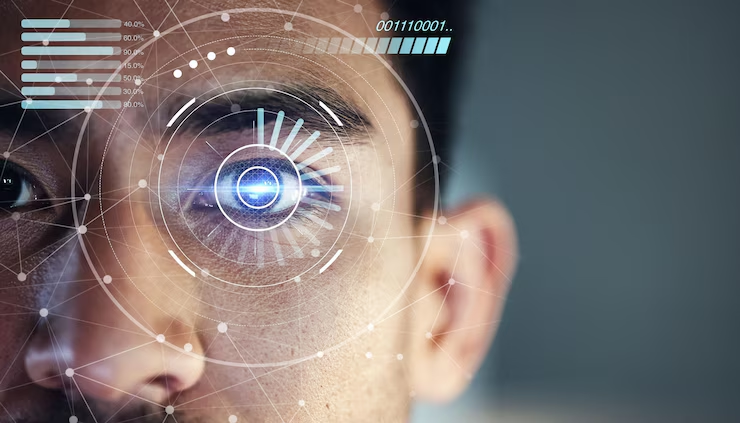What Role Does the Facial Action Coding System Play in AI Development?
- thelightbulbai
- Jul 16, 2024
- 3 min read
The Facial Action Coding System (FACS) is a comprehensive framework for categorizing human facial expressions based on muscle movements. Developed by Paul Ekman and Wallace V. Friesen in the 1970s, FACS has been instrumental in psychological research and is now playing a significant role in the development of artificial intelligence (AI). This blog explores the role of the Facial Action Coding System in AI development, highlighting how it enhances machine learning algorithms and improves human-computer interaction.
Introduction to the Facial Action Coding System
The Facial Action Coding System provides a detailed method for encoding facial expressions by identifying specific muscle movements, known as Action Units (AUs). Each facial expression is broken down into these AUs, which can then be analyzed to understand the underlying emotions. FACS is widely used in psychological studies to decode human emotions, and its application in AI has opened new avenues for innovation.
Enhancing Emotion Recognition
Emotion recognition is a crucial component of many AI systems, particularly those involved in human-computer interaction. By integrating the Facial Action Coding System, AI can accurately interpret human emotions based on facial expressions. This capability is essential for developing empathetic and responsive AI systems that can understand and react to human emotions appropriately.
TheLightBulb.ai Provides The Best Ai based Facial action Coding Tools For Businesses.
For example, in customer service applications, AI-powered chatbots equipped with FACS can gauge the emotional state of a user and adjust their responses accordingly. If a user appears frustrated or confused, the AI can offer additional support or escalate the issue to a human agent. This level of emotional intelligence improves user satisfaction and enhances the overall interaction experience.
Improving Human-Computer Interaction
Human-computer interaction (HCI) relies heavily on the ability of machines to understand and respond to human behaviors. The Facial Action Coding System enables AI to interpret subtle facial cues, making interactions more natural and intuitive. By recognizing emotions such as happiness, sadness, anger, and surprise, AI can tailor its responses to align with the user's emotional state.
In educational technology, for instance, AI tutors can use FACS to monitor students' facial expressions during lessons. If a student shows signs of confusion or frustration, the AI tutor can provide additional explanations or adjust the difficulty level of the content. This personalized approach helps create a more engaging and effective learning environment.
Advancing AI in Healthcare
The healthcare industry is increasingly adopting AI to improve patient care and outcomes. The Facial Action Coding System plays a vital role in this domain by enabling AI to monitor and assess patients' emotional and physical states. For example, AI systems in mental health applications can use FACS to detect signs of anxiety, depression, or stress in patients' facial expressions. This early detection allows healthcare providers to intervene promptly and offer appropriate support.
Additionally, in telemedicine, AI-powered diagnostic tools can analyze patients' facial expressions during virtual consultations. By interpreting these expressions, the AI can provide doctors with valuable insights into the patient's condition, improving the accuracy of diagnoses and treatment plans.
Enhancing Security and Surveillance
Security and surveillance systems benefit significantly from the integration of the Facial Action Coding System. AI equipped with FACS can analyze facial expressions to identify suspicious behaviors or potential threats. In high-security areas such as airports or public transportation hubs, AI systems can monitor crowds and detect individuals displaying signs of nervousness, fear, or aggression.
This real-time analysis enables security personnel to respond quickly to potential threats and ensure public safety. Moreover, facial recognition systems that incorporate FACS can enhance their accuracy by considering the emotional context of facial expressions, reducing false positives and improving overall system reliability.
Facilitating Market Research
Market research relies on understanding consumer emotions and preferences. The Facial Action Coding System helps AI systems analyze consumer reactions to products, advertisements, and marketing campaigns. By interpreting facial expressions, AI can provide businesses with insights into how consumers feel about their offerings.
For example, during a product launch, AI can monitor participants' facial expressions to gauge their reactions. Positive emotions such as happiness and excitement indicate a favorable response, while negative emotions like confusion or disappointment suggest areas for improvement. These insights allow businesses to refine their products and marketing strategies to better meet consumer needs.
Conclusion
The Facial Action Coding System plays a pivotal role in AI development by enhancing emotion recognition, improving human-computer interaction, advancing healthcare applications, boosting security and surveillance, and facilitating market research. By enabling AI to accurately interpret human emotions, FACS helps create more empathetic, responsive, and effective AI systems. As AI continues to evolve, the integration of the Facial Action Coding System will be crucial in developing technologies that understand and cater to human emotions, ultimately improving the quality of interactions between humans and machines.
Read More Related Blogs
What Are the Common Misconceptions About Facial Action Coding?
How Can the Facial Action Coding System Be Used in Educational Settings?




Comments